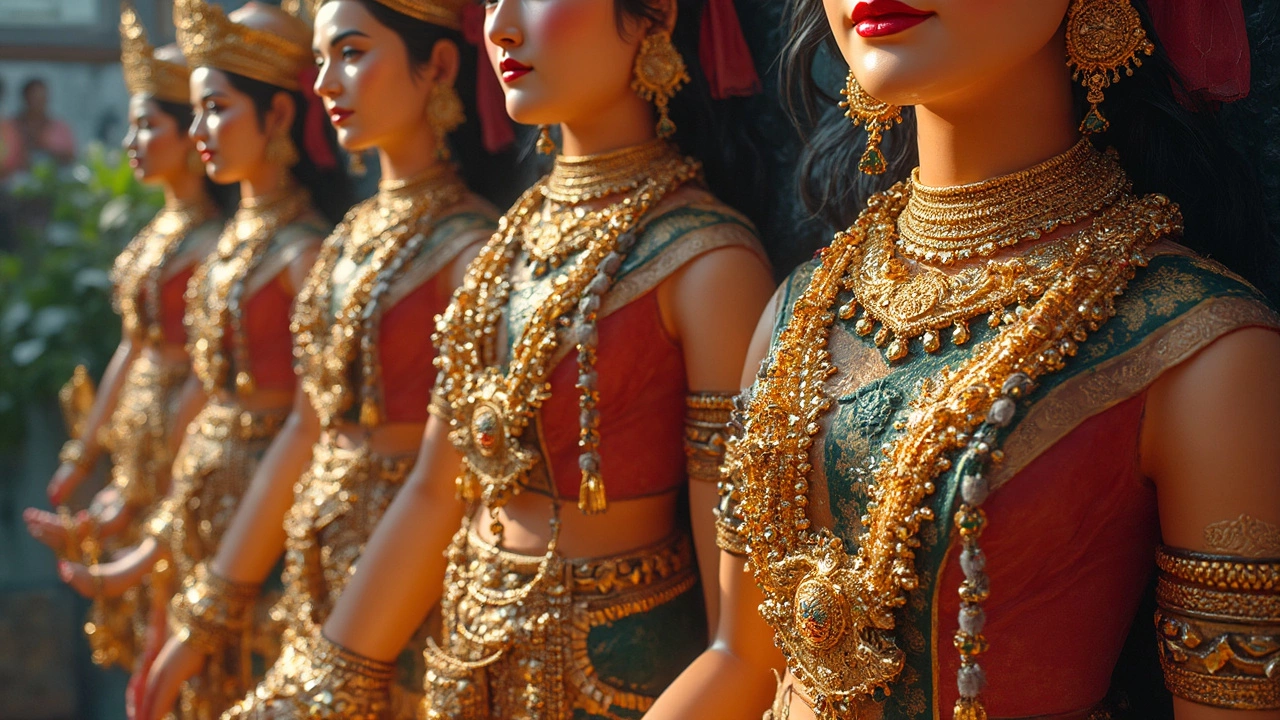Indian Traditional Jewelry: Heritage Meets Everyday Style
When we talk about Indian traditional jewelry, a rich collection of ornaments that reflect centuries of art, religion and regional identity. Also known as heritage jewelry, it weaves together metalwork, gemstones and symbolism, making each piece more than just an accessory.
Key Pieces in Indian Traditional Jewelry
One of the most recognizable symbols is the Mangalsutra, a sacred necklace tied by the groom during Hindu weddings, signifying marital commitment. It often features a gold chain with black beads or a pendant that carries deeper meanings about protection and prosperity. Another staple is the Bangles, rigid bracelets worn in multiples, symbolizing energy, fertility and marital status. These cuffs come in colors, designs and metals that vary by region—red lacquer in the north, gold in the south. The Nose Pin, a tiny stud or hoop placed on the nostril, historically linked to Ayurveda and beauty, still pops up in contemporary looks. Finally, the Bindi, a decorative dot on the forehead representing the third eye and spiritual focus, ties the whole ensemble together, marking cultural identity and personal style.
These elements illustrate that Indian traditional jewelry encompasses not just ornaments but rituals. The mangalsutra influences marital customs, the bangles convey social signals, and the bindi reflects spiritual beliefs. All of them require a grasp of cultural context, making the selection process a blend of aesthetics and knowledge. Moreover, the materials—whether 24K gold for a classic look or affordable one‑gram gold pieces for everyday wear—affect durability and price, shaping how people incorporate heritage into daily life.
Regional diversity adds another layer. In Punjab, the choora (red and white bangles) is paired with a heavy kada (steel bracelet) during weddings, while in South India, gold maang tikka (forehead ornament) often accompanies elaborate pearl necklaces. Each state contributes its own motifs: lotus petals in Gujarat, temple jewellery in Tamil Nadu, and meenakari enamel work in Rajasthan. This geographic spread shows how Indian traditional jewelry adapts to local customs, climate and fashion, yet maintains a shared symbolism of prosperity, protection and celebration.
Modern designers are reimagining these classics for today’s market. One‑gram gold jewellery lets fashion‑forward shoppers enjoy the look of solid gold without the heavy cost, perfect for layering with statement bangles or pairing a sleek nose pin with minimalist attire. Digital platforms now help buyers compare gold purity—24K vs 22K—and understand hallmark markings, empowering informed purchases. The result is a seamless bridge between centuries‑old traditions and contemporary lifestyle needs.
Below you’ll find a curated collection of articles that dive deeper into each of these topics—whether you’re curious about mangalsutra etiquette, bangles gifting customs, nose pin styling tips, or the evolving role of the bindi. Explore the insights, practical guides and cultural backstories that will help you appreciate and choose the perfect piece of Indian traditional jewelry for any occasion.
